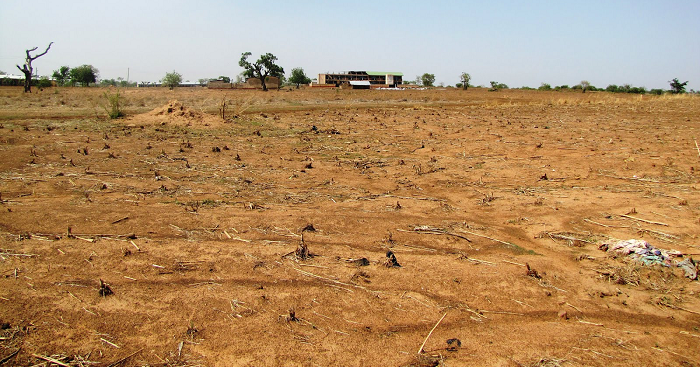
Degraded land in Upper East Region to be restored
More than 2,000 hectares of degraded land in the Upper East Region are to be rehabilitated to prevent the debilitating effects of drought and desertification in the area.
Advertisement
Additionally, a comprehensive tree planting exercise is being developed in 10 beneficiary communities, basic and senior high schools located within the Bongo District, as well as the Bawku and Kassena Nankana municipalities to restore degraded land in those areas.
These initiatives, among others, are being jointly implemented by the Environmental Protection Agency (EPA) in collaboration with the Upper East Regional Coordinating Council (RCC) and the three beneficiary district assemblies to reduce land degradation to the barest minimum.
The Upper East Regional Minister, Mr Albert Abongo, made this known in a speech read on his behalf at this year's national celebration of the World Day to combat Drought and Desertification at Bongo last Friday.
It was on the theme: "Inclusive cooperation for achieving land degradation neutrality."
Land degradation
Mr Abongo further observed that "all these interventions are commendable as they would complement the country's efforts at achieving the Sustainable Development Goal (SDG) which is to achieve land degradation neutrality”.
"With the current rate of land degradation and increasing population, how to meet the expected needs for water, energy and food poses a great challenge, particularly for people of northern Ghana," the minister said.
He, therefore, called for "synergies among all stakeholders to adopt integrated approaches to land management and its utilisation", and underscored the need for metropolitan, municipal and district assemblies (MMDAs) to revive their district environmental management committees.
Desertification of the north
The Deputy Minister of Environment Science, Technology and Innovation, Dr Alfred Sugri Tia, indicated that 65 per cent of the total land mass of Ghana was prone to desertification which could be found in parts of the three northern regions.
He noted that increased illegal logging, rampant bush burning and charcoal production had, over the years, contributed to increasing drought and desertification of the north.
In that regard, he said there was the need for an integrated approach to combat desertification, adding: "The Ministry of Environment Science, Technology and Innovation is collaborating with all relevant institutions to embark on inclusive sustainable growth agenda for the country to combat drought and desertification."
The Board Chairman of the EPA, Professor Vincent Nartey, observed that the low level of water in the Akosombo Dam was as a result of the effects of desertification in the north which is a catchment area for the Black and White Volta.
Bongo District
The Member of Parliament for Binduri, Mr Ben Noah Azure, observed that due to increased human activities, the Bongo District had been identified as one of the drought and desertification-prone areas of the north hence there was the need for concerted efforts to address those issues.
The Deputy Executive Director of the EPA in charge of operations, Mr John Pwamang, said environmental clubs had been established in schools, while the EPA had constituted the Environmental Management Committees involving non-governmental organisations and community-based organisations to formulate local bye-laws.
As part of the celebration,the Paramount Chief of the Bongo Traditional Area, Bonaba Baba Salifu Atamale Lemyaarum, was honoured among other deserving people for his immense contribution towards efforts at reducing the effects of drought and desertification in the Bongo District and the rest of the Upper East Region.
Four trees were planted to mark the day.



